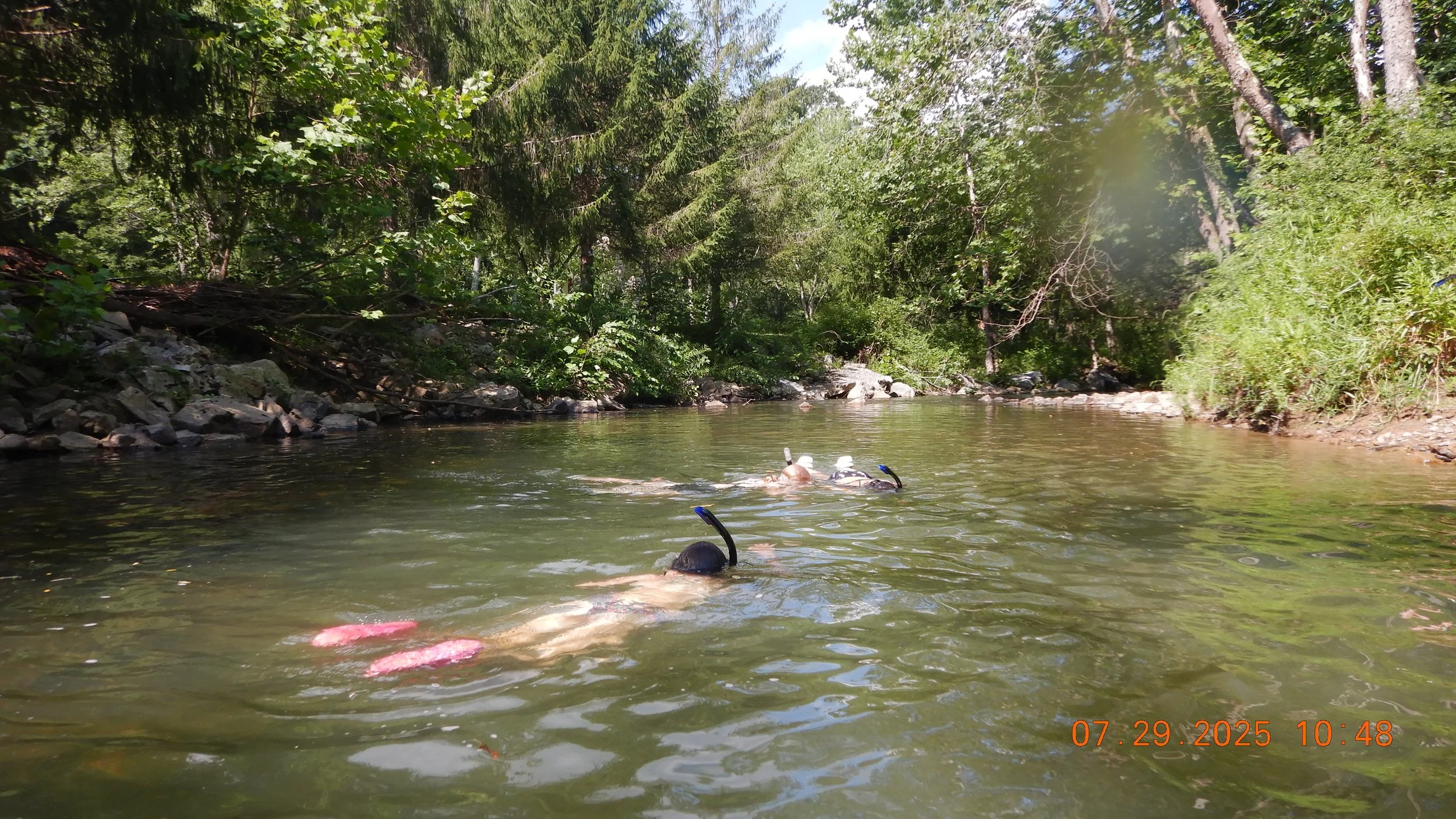What’s New?
Stay up to date in AFNHA activities, events, and organizational news.
Join us at the Appalachian Forest Discovery Center on August 2nd for a free screening of The Pollinators!
Join us each week at the Appalachian Forest Discovery Center for Discovery Time, a summer program bringing fun, free, and educational activities for all ages. These events are free, and often include take-home kits and projects. Visit us for discovery time every Saturday, 11-12:30 AM, until the end of August.
Check out our Instagram and Facebook to see what activity we will have each week!
Movies at the Mill presents a free screening of “Matewan” with a conservation and performance with Folklorist and “Matewan” fiddler Gerry Milnes to follow. Join us at the Appalachian Forest Discovery Center in Elkins on July 18th at 5:00PM.
Are you passionate about our National Heritage Area, its history and heritage? Do you have insights, experiences, or research you're eager to share with a dynamic audience? We invite you to submit a proposal to present at the Appalachian Forest Discovery Summit!
The Appalachian Forest Heritage Area Inc. (AFNHA), is seeking a qualifications package and expressions of interest from Architectural firms to provide design and other pre-development services for the Darden Mill Redevelopment Project located at 101 Railroad Avenue in Elkins, WV.
We are extremely saddened by the termination of several other AmeriCorps programs in West Virginia and many more nationwide. These losses of funding have affected many partner organizations within our region. While our own AmeriCorps program has been unaffected and AFNHA remains fully operational, we mourn these losses and expect serious consequences for our communities.
Growth Rings: Appalachian Forest National Heritage Area Newsletter
Within Growth Rings:
AmeriCorps Positions
Discovery Summit
America's 250th
Volunteer Opportunities
Welcoming New AmeriCorps
The Historic Beverly Lantern Tours is an annual series of tours led by long-time volunteer and contributor to the Beverly Heritage Center, Karl Mulac. As per tradition, the Lantern Tours were scheduled for four nights, across two weeks in October, and took visitors through the Beverly Historical District as they listened to tales of crime, tragedy, and mystery from the last three centuries, the way lit by kerosene lanterns and the occasional sprinkle of humor.
During my AmeriCorps service with the Monongahela National Forest, I have had the opportunity to work with various nonprofits and community groups. My favorite and most significant collaboration has been with the Greenbrier River Watershed Association.
When I began my AmeriCorps service year, I wasn’t entirely sure what to expect. I knew I wanted to give back to my community and grow in my own skills, but I couldn’t have predicted just how much this experience would shape me.
AmeriCorps member shares the experiences they’ve had at Seneca Rocks Discovery Center promoting the Homestead and Heritage Garden.
AmeriCorps member serving with the Canaan Valley National Wildlife Refuge shares their experience with bird banding.
Our young country will soon be celebrating its 250th birthday and telling our stories, reflecting on the historical moments, and preserving these experiences is one way to celebrate this milestone.
Founded in 1868 by the Hoyt Brothers from New York the Paw Paw Tannery, under the ownership of United States Leather Company, became the largest supplier of industrial belt leather in the world. Constructed on the Potomac River adjacent to the B&O Railroad Mainline the location was ideal for a tannery with hides coming from the Union Stockyards in Chicago. The tannery rebuilt after fires and floods before finally succumbing to a drop in demand for leather as the world switched to synthetics. The Paw Paw Tannery closed in 1951.
Like the barren surface of the moon, the crest of Cabin Mountain stretched out in a desolate field of rock. Botanist Harry Allard came across this stark image when he walked in the wastelands of Grant County’s spruce forests following an era of intensive logging and roaring forest fires. The life and death of West Virginia’s high altitude valleys is a story of a hidden boreal ecosystem, the transformative harvest of the forest, and its devastating aftermath, leaving little but the seeds for a hopeful rebirth.
If the unmistakable rust-red and ochre brick walls of the Golden Rule Building could talk, what stories would they tell? Most likely they would beam about the town of Belington, a place that has long relied on the Golden Rule and in the building’s darkest hour, brought it love and new life.
For European settlers, Hampshire County, Virginia in the early 1800’s was an unknown territory on the periphery of American society. The land, while previously inhabited by Native Americans, was only recently reached by Europeans. For immigrants like the Pugh’s coming from Wales, the Capon Valley was reminiscent of their former homeland. Establishing a homestead in the remote valley required self reliance, innovative spirit, and sheer will. David Pugh would carve out a legacy into the Capon Valley, one that continues to shine as a beacon honoring a family’s determination to establish a place they could call home.
In July of 1877, a strike on the Baltimore and Ohio railroad threw the United States into a crisis that shook its very foundations. The outburst became the first nationwide general strike in US history, travelling across major and minor railroad lines and spreading into countless other industries. In the Appalachian Forest, battlegrounds erupted in Allegany, Morgan, and Mineral County in the mountains and woods along the B&O line. The uprising crossed divisions of race, gender, and status as the downtrodden rose up against an absolute power.
The Pollinator Initiative is back in bloom! This summer, AFNHA is expanding our efforts to promote education about our local pollinators and the ways we can help their declining populations.
We are planning to start a seed bank of native plants and will be recruiting local volunteers to help, and we are seeking donations of seeds to stock our bank.
Follow us on Facebook and Instagram to stay up-to-date with what we are doing!


























